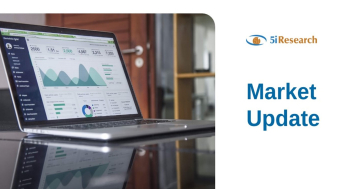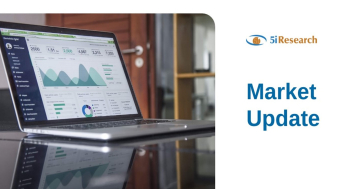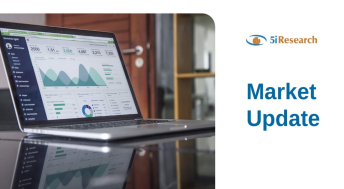
New Report
We have posted a new report on Trisura Group (TSU). The company is an international specialty lines insurance carrier that was initially founded and created with Brookfield Asset Management. The company has been growing fast and increasing its market share over the past 20 years. We feel that management has done an excellent job of growing the company, and its organic growth is demonstrative of its solid business model.
Read the latest updates by logging in here!
2021 IPO Report
2021 was a massive year for IPOs in the Canadian market, and we wanted to round up some of the companies that caught our attention. We have written brief summaries on 12 Canadian IPOs for the year 2021 that we found interesting and that may play important roles in the Canadian economy going forward. The companies that we have selected range from the retail pharmaceutical space, payment processing, technology consulting, eCommerce, SaaS businesses, and cloud-based e-learning platforms. We think that not only are the themes telling of what sectors may have high growth prospects for the future but also the list may include some potential long-term winners.
Read the latest updates by logging in here!
Report Update
We have posted a report update on goeasy Ltd. (GSY). Goeasy has built up a great reputation and has grown to become one of Canada's leading providers of non-prime leasing and lending services. The company employs a long-term strategy that includes expanding its product range, developing channels of distribution, and broadening its geographic exposure. With a solid business model, a good track record of financial performance, and a long runway ahead of it, we think goeasy remains a good growth name to keep on watch.
Read the latest updates by logging in here!
Market Update
The financial markets over the past few weeks have been on edge, to say the least. The Nasdaq has been leading most sessions lower as high-growth tech stocks are being sold off, and value stocks in the Dow Jones and the S&P 500 are getting bought up. Much of this can be attributed to the growing narrative of a rotation out of growth stocks and into value stocks, and also in anticipation of increased interest rates throughout 2022. The Federal Reserve has certainly shown a more hawkish stance, as members indicated they would like to see the Federal Reserve’s balance sheet begin to runoff in late 2022. Another high US inflation reading came in this past week, coming in at 7%, the highest since 1982. The TSX has been having a good month on the back of the continued energy sector momentum. So far, much of 2022 has been driven by fear and uncertainty of exactly what actions the Federal Reserve might take, and in this update, we look to expand on what that might mean for the markets.
Federal Reserve Balance Sheet
Coming into the end of 2021, most investors were beginning to price in some interest rate hikes in 2022, however, what shocked most investors earlier this month was an indication from the Federal Reserve that there were mentions of assessing a balance sheet runoff. The Federal Reserve’s balance sheet has been expanding since the global financial crisis in 2008, as it has injected liquidity into the economy. Below is a graph that showcases the Fed’s balance sheet, and actions that have caused it to expand and contract over the past several years. We can see that following the 2008 recession, the balance sheet expanded rapidly, and then between 2013 and 2014 the Fed started and ended the bond buying-tapering process. This means that in 2013 it slowed the process at which it injected liquidity, and in 2014 it stopped purchasing bonds altogether. This period between 2014 and 2017 is where we can see the balance sheet stagnate, until late 2017 when quantitative tightening began (the Fed began selling its bonds).

What is interesting, is that it was not the pandemic in early 2020 that caused the balance sheet to begin expanding once again, it was a lack of cash reserves in the financial system (Repo crisis) that caused the Fed to begin injecting small amounts of liquidity once again.
What we can expect to see the above chart begin to look like later this year is a gradual flattening of the balance sheet, as the Fed begins to stop its purchasing of bonds, and potentially a decline in the balance sheet, as it allows the bonds to runoff.
Annual S&P 500 Returns and Interest Rate Hikes
There is largely consensus that the Fed will raise interest rates three times this year, beginning with a hike in March. We can see below that the Fed increased interest rates throughout 2015 to 2018, and the average annual return of the S&P 500 during those years was 7.7%. This is not to say that the S&P 500 is guaranteed to have a positive year in 2022, although it is to say that interest rate hikes do not necessarily imply a negative return for the markets.

Interaction Between Bond Yields, Equity Prices, and Interest Rates
Bond yields have been steadily rising over the past year in anticipation of higher interest rates. It was well-known early in the pandemic that eventually, interest rates would need to be increased. Bond yields move in advance of actual interest rates and attempt to mirror the future direction of interest rates. Rising bond yields have a negative correlation with equities, as equity prices are discounted by the ‘risk-free rate’ which is typically a short-term bond yield. If bond yields increase, theoretically, equity prices should decrease.
Elevated or increasing bond yields have a negative impact on equity prices, but as we can see below from previous interest rate increases, most advances in bond yields occur well before the actual interest rate hikes do. Between 2003 and 2004, bond yields increased by 36% from their local lows just as the interest rates began to increase successively. As the central bank interest rates increased from 1% to just above 5% between 2005 and 2007, bond yields only gained 11% from their local highs. A similar pattern occurred in 2017 as investors anticipated the eventual increase of interest rates. This demonstrates that bond yields move in anticipation of the implied actions by the Federal Reserve, and historically, once the actual rate hikes begin to occur, bond yields have already priced in most of these increases. This is something that we may be able to expect later this year and into 2023, which indicates that most of the increase in the risk-free rate of return may already be priced in. This could alleviate some of the downward pressure on equity prices later.

Of course, if the Federal Reserve decides to begin quantitative tightening (balance sheet runoff) later this year, that can also have a negative compounding impact on equities.
Final Thoughts
While there are certainly some headwinds in the equity markets, as investors anticipate future interest rate hikes, an end to bond-buying tapering, and potential quantitative tightening, we would also like to bring forth the reality of the historical financial market outcomes because of these events. With news of three rate hikes, the end of tapering, and potentially quantitative tightening all occurring this year, we feel that the Federal Reserve has a lot on its plate to deliver, and markets are in the process of pricing these events in right now. But with that said, we can also see from history that the market can be efficient in pricing in these events well in advance, and historically most of the bond yield increases (negative force against equities) have been made prior to the actual increasing of interest rates.

Model Portfolio Changes:
Balanced Equity Model Portfolio
Add 0.5% to Scotiabank (BNS)
Trade Rationale - Share momentum has improved with BNS and we think for good reason. With interest rate hikes on the horizon, we think BNS is a name in the Balanced Equity Portfolio that will show strong earnings growth.
Add 0.25% to Shopify (SHOP)
Trade Rationale - We have kept SHOP as a small position in the Balanced Equity Portfolio due to its potential for volatility and historically expensive valuation. However, despite the harsh sell-off seen in recent months, Shopify’s business continues to grow and management continues to find ways to expand its addressable market. We are comfortable adding to SHOP at these levels while keeping the position size relatively conservative.
Add 0.75% to Suncor Energy (SU)
Trade Rationale - Oil and gas producers are seeing plenty of near-term tailwinds such as continued inflation and oil demand. We believe SU is well-positioned to continue benefiting given its diversified asset base and strong capital expenditure capabilities to help it meet demand. SU arguably deserves a premium given its size and at 8x forward earnings we are quite comfortable adding to it at these levels.
Growth Model Portfolio
Add 0.5% to Anaergia (ANRG)
Trade Rationale - We think much of the selloff over the last month is mostly market-related and with a solid pipeline, revenue visibility, and a strong market position in waste conversion to renewable energy, we like shares even better at these levels. While shares are above IPO levels, at 3.7x expected sales next year, multiples are below what they were when the company went public last year.
Add 0.5% to Converge Technology Solutions (CTS)
Trade Rationale - Shares for CTS have been consolidating for quite some time and we feel comfortable accumulating some shares here. We believe management has a solid methodology for acquisitions and will generate attractive returns for shareholders in the long run.
Add 1.5% to ECN Capital (ECN)
Trade Rationale - After having received a large special dividend as a payout for the ECN’s spin-off, this provided us with some extra cash to work with. While the company is now half the size due to the spin-off, we continue to have high confidence in management and would be comfortable bringing this name back to a full position.
Sell Full Macro Enterprises (MCR) Position
Trade Rationale - While we continue to like the prospects for MCR in the long run, growth has not been as strong as we expected. This is understandable given the lag seen in energy equipment and services names. At this stage, we would prefer to replace MCR with other oil and gas names that have a more favourable near-term outlook.
Add 1.0% to Each Kelt Exploration (KEL) and Tamarack Valley Energy (TVE)
Trade Rationale - In a combination of using some excess cash already in the portfolio and reinvesting proceeds from MCR, we think a diversification play among two mid-caps oil names will work well. We like the growth, profitability, and balance sheet of both KEL and TVE and view them as two solid oil producers to benefit from increased demand.
Add 0.5% to Telus International (TIXT)
Trade Rationale - With the valuation at a historical low and the tech growth story still intact, we are comfortable adding to TIXT at these levels.
Add 0.5% to Trisura Group (TSU)
Trade Rationale - With TSU showing such strong growth in both revenue and profits and a rock-solid balance sheet, we think shares should be awarded a higher valuation. TSU is an emerging mid-cap insurance company with scale advantages compared to smaller names. We continue to like the growth potential here for this name.
Best wishes for your investing!
www.5iresearch.ca





Comments
Login to post a comment.